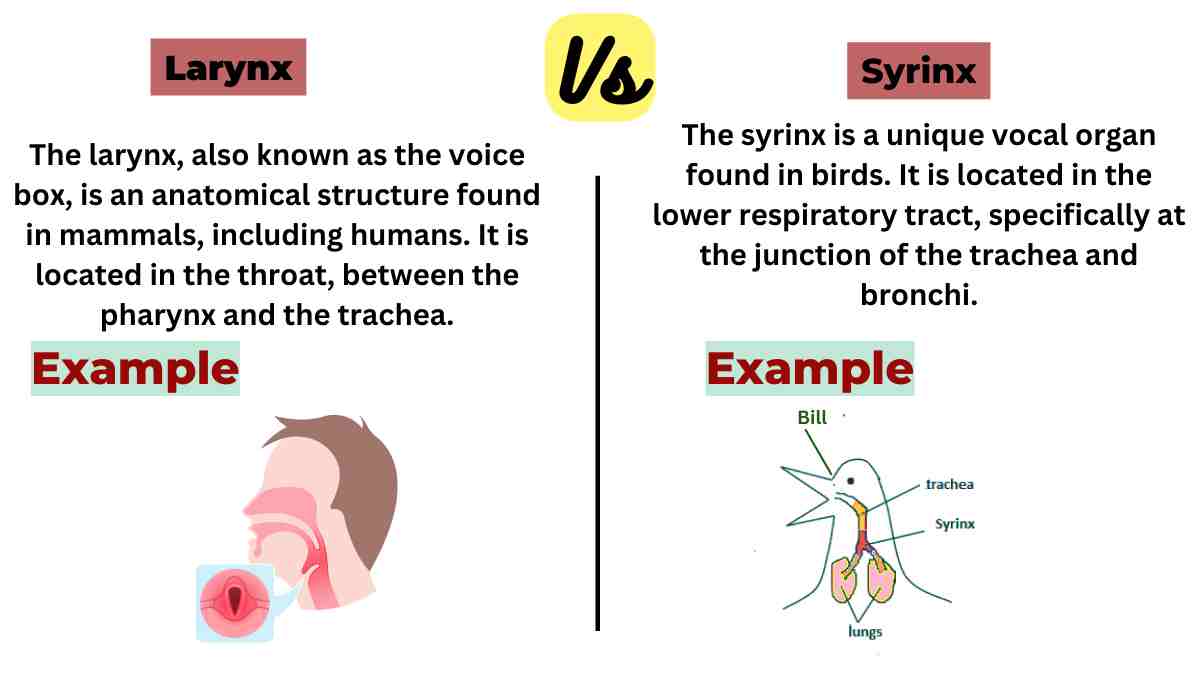The key difference between larynx and syrinx is that the larynx is a vocal organ located in mammals, while the syrinx is a vocal organ found in birds.

What is Larynx?
The larynx, also known as the voice box, is an anatomical structure found in mammals, including humans. It is located in the throat, between the pharynx and the trachea. The larynx plays a crucial role in voice production, airway protection, and swallowing.
What is Syrinx?
The syrinx is a unique vocal organ found in birds. It is located in the lower respiratory tract, specifically at the junction of the trachea and bronchi. The syrinx is responsible for producing sounds and vocalizations in birds.
Larynx vs Syrinx
The key difference between larynx and syrinx is given below:
| Feature | Larynx | Syrinx |
| Location | Located in the throat of mammals and humans | Located in the lower respiratory tract of birds |
| Function | Involved in voice production, airway protection, and swallowing. | Responsible for vocalization in birds, often producing complex sounds and songs. |
| Structure | Consists of cartilage, muscles, and vocal cords. | Composed of specialized tissues, including membranes, muscles, and syringeal cartilages. |
| Anatomy | Contains vocal folds (vocal cords) that vibrate to produce sound. | Contains labia, labia muscles, intrinsic syringeal muscles, and other components involved in sound production. |
| Complexity | Limited sound range compared to the Syrinx. | Highly complex in structure, allowing for a wide range of vocalizations, and often capable of producing multiple notes simultaneously. |
| Species Variation | Similar in structure and function across mammals and humans. | Varies significantly in structure and location among different bird species. |
| Sound Range | Highly complex in structure, allowing for a wide range of vocalizations, and often capable of producing multiple notes simultaneously. | Broad sound range and flexibility, allowing for various calls, songs, and imitations. |
| Adaptability | Less adaptable and limited in terms of producing diverse sounds. | Highly adaptable and capable of producing species-specific vocalizations and complex melodies. |
